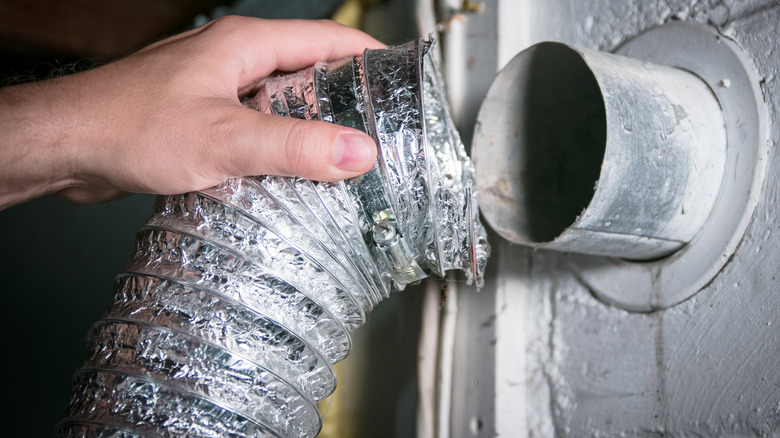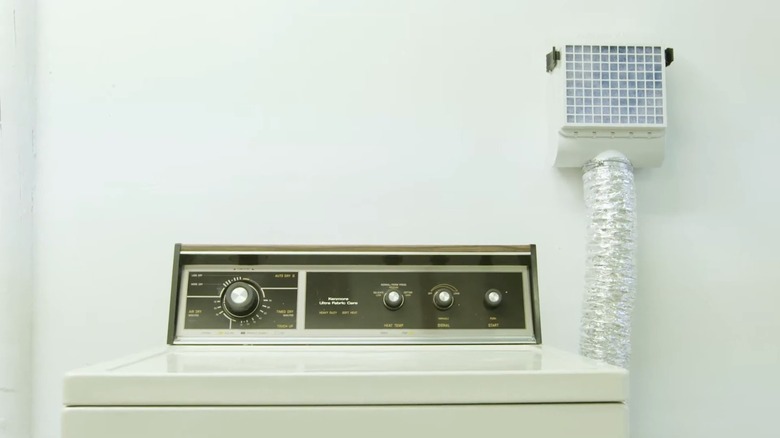What You Need To Know Before Using An Indoor Dryer Vent Bucket
Most homeowners have wrestled with dryer vents in one way or another — from ductwork that stubbornly refuses to stay attached to unintended housefires. If your dryer is located where it's difficult or impossible to run a code-compliant vent, you might naturally turn to indoor dryer vents, sometimes called vent buckets. These devices are commonly available in big-box stores and can easily be DIYed. They allow you to vent your dryer to the inside of your laundry room by exhausting it into a container partly filled with water that's designed to trap most of the lint produced by the dryer. It turns out that there are a few potential problems with this solution, but the device also has its benefits.
To be sure, indoor dryer vents eliminate the immediate need to run your dryer vent through walls, into crawlspaces or basements, and across enormous distances. They also keep the heat they produce inside your home, which might be useful in some climates at some times of the year. Because they increase humidity within the house, they're most suitable for use in dry climates. But are the benefits worth it? There are a few problems with indoor dryer vents, and they're all pretty predictable. Any time a long-established solution is upended, it makes sense to ask what habits and processes have sprung up along the way because of that solution that might suddenly disappear.
The downsides of indoor dryer vents
Obviously, dryer vents move moisture and lint from the dryer's drum to the outdoors. And since vent buckets aren't 100% effective at removing lint and don't do much in the way of moisture removal, you can only expect all that to end up inside your home. Of course, lint is a fire hazard, but it's also a fire hazard for outside-venting dryers. But since indoor vents release it inside, there are naturally air quality issues around the resulting dust and chemicals from dryer sheets and other laundry products. Some have even complained that the fine particles released by indoor vents will trigger smoke detectors. The constant influx of moisture — up to a gallon of water per load of laundry, especially soaking-wet (and dryer-damaging) laundry – is a major risk factor for mold.
Furthermore, indoor dryer vents require careful maintenance of water levels within the bucket or box that makes up the system. Vent buckets also violate building code requirements in many states, and their use must be reported to potential future buyers of your home. The problems are worsened by building practices for modern homes that result in a basically airtight structure. Ventless dryers, which have their own pros and cons, are a viable alternative to vent buckets if you don't have a means of venting to the outside, but they might not be as efficient as a regular dryer. And never use them with gas dryers, which vent carbon monoxide. If you're not sure whether your dryer is gas or electric, here's how to tell.

